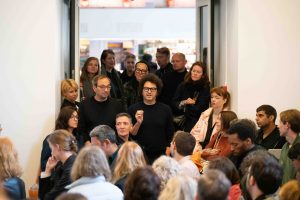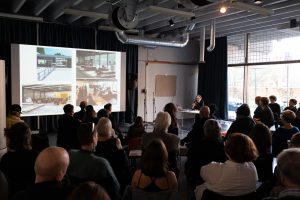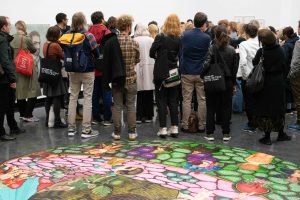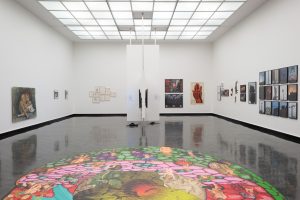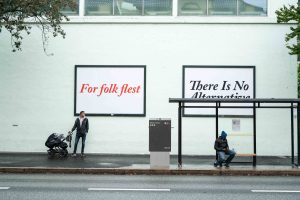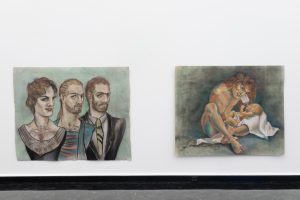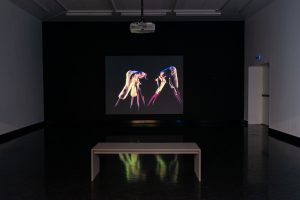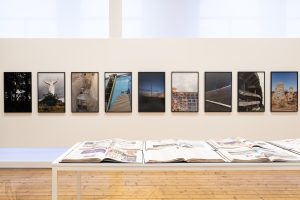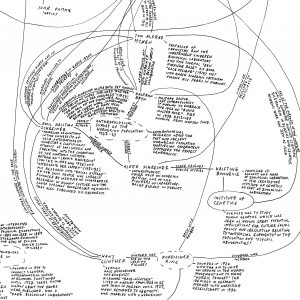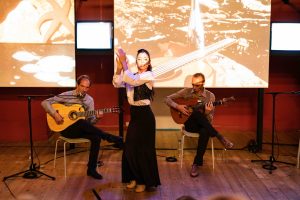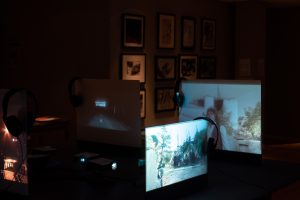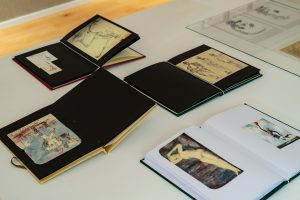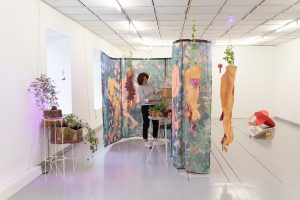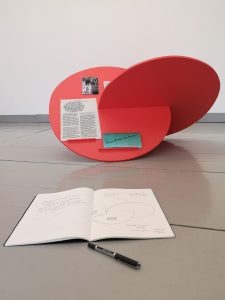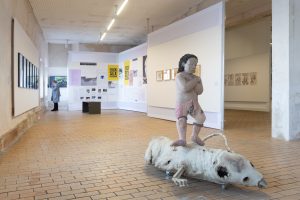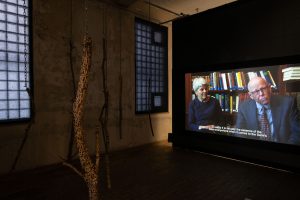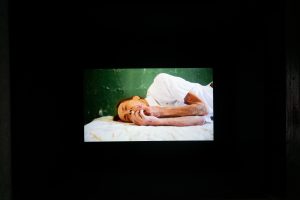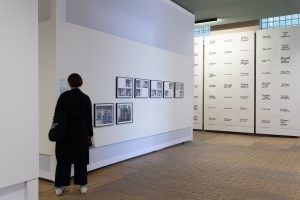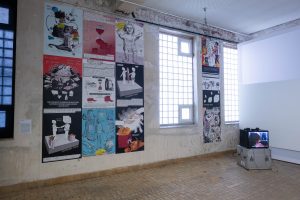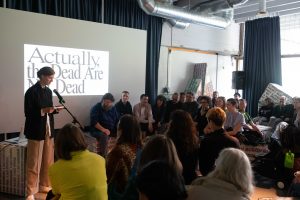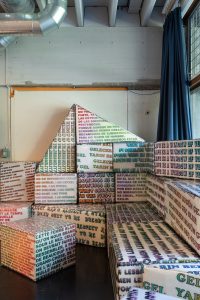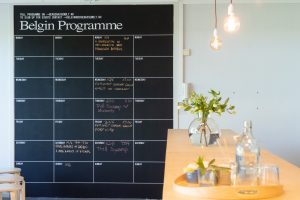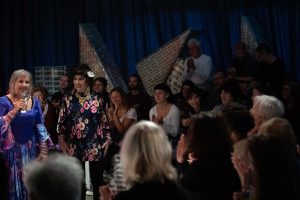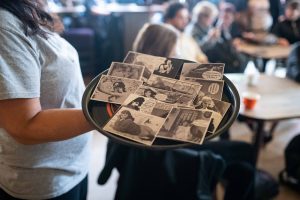Exhibition
5.9.–10.11.2019
Opening Days 5.–8.9.2019
Admission free
The exhibition conceived by the core group and co-curators of Bergen Assembly 2019 takes place at five different locations and public spaces in Bergen. It is not structured according to thematic sections or curatorial authorship but rather along constellations that repeatedly rearrange the different strands of the content of Actually, the Dead Are Not Dead. Two curatorial contributions deviate from that system, each having its own title and space. The exhibition, which is conceived as a whole, thus results from the interplay of different individual and shared curatorial settings that cannot be traced back to individual authorship. This produces an innate rhythm of concentration and opening, intensification and ramification.
BERGEN KUNSTHALL
Rasmus Meyers alle 5, 5015 Bergen
Tuesday–Sunday 11am–5pm, Thursday 11am–8pm, Monday closed
www.kunsthall.no
The unseen and unheard as well as strategies for making oneself heard and seen play a central role in this part of the exhibition. Voices that did not count for decades and were perceived as mere noise remind us that overcoming oppression is not just about whether someone raises their voice but also whether, how, and as what it is heard. What relationships to others can be established if language or speaking is unavailable? What relationship to oneself can be built if the things around one no longer reveal a coherent narrative, when precarious living conditions cause the surroundings to dissolve as a site to locate the self?
The body as the first and last possible entity of resistance is treated here in different ways: as support or canvas on which to inscribe one’s own story; as a dissident body that inscribes itself into public space in an insistent or drifting way, alone or in company, struggling or celebrating – always in a balancing act and struggle against the powerful voice of the law. It occurs again and again as a body in transition: that is, as a body that constantly shifts the boundaries between genders but also between animal and human, subject and object, sovereign and beast, intactness and lack, death and life. It is this resistant body that counteracts the politics of death whose cartographies we encounter here. The significance of the physicality of the voice eventually returns in the context of the theory and practice of radical pedagogy.
Daniel G. Andújar, John Barker / Ines Doujak, Lorenza Böttner, Lisa Bufano / Sonsherée Giles, Ruth Ewan, Flo6X8, Robert Gabris, Jan Peter Hammer, Hiwa K, Anette Hoffmann, Teresa Lanceta / Pedro G. Romero, Yunyop Lee, Suntag Noh, PEROU / Sébastien Thiéry, Imogen Stidworthy, The creators of Oi!, Emma Wolukau-Wanambwa
KODE 1 PERMANENTEN
Nordahl Bruns gate 9, 5014 Bergen
Tuesday–Friday 11am–4pm, Saturday–Sunday 11am–5pm, Monday closed
www.kodebergen.no
– SALON
This part of the exhibition begins with the dissolution of one of the institutions par excellence that controls and is haunted by the past: the museum. The invention of the modern museum in the late-18th and early-19th centuries, in parallel with the peak of colonialism, was part of the nation-building processes in Europe and their construction of identity and the ‘other’. The scientific discourses on race, genetic purity and superiority, of worthy and unworthy life, are interwoven with this institution in diverse ways. They are contrasted here with drafts of life that undermine eugenic forms of selection.
Aspects of care and preservation are treated in diverse and divergent ways: from the historical and current struggles of indigenous peoples to preserve their ecological, territorial and economic bases of life to alternative projects for cultivating plants; from initiatives to eliminate deadly working conditions to the celebratory funeral for an activist collective; from the unfathomable love for a ‘monster’ to the critical questioning of the emotional work of women in moments of crisis. And there is Mercury, the patron of merchants and thieves, who guards the production of a currency system that even today remains profoundly interwoven with the history of colonialism. The selective distribution and perception of news by the mass media becomes tangible using the example of newspapers and their power over what is heard, silenced or so overexposed that it becomes invisible. The model of the moratorium – in the sense of the non-recognition of a law perceived as unjust from an indigenous perspective that thus creates a decolonised space of negotiation – appears as an alternative to hegemonic models of political participation.
Lorenza Böttner, Simnikiwe Buhlungu and Malebona Maphutse (former Title in Transgression members) feat. the Community, Capital Drawing Group, Banu Cennetoğlu, Laressa Dickey / Magdalena Freudenschuss, Ines Doujak, Niklas Goldbach, Minna Henriksson, Niillas Holmberg / Jenni Laiti / Outi Pieski, Alexander Kluge, Darcy Lange / Maria Snijders, Åsa Sonjasdotter, Nina Støttrup Larsen, Emma Wolukau-Wanambwa, Workers’ Families Seeking Justice (WFSJ) and its Support Group
– CABINET
political parties
Curatorial Contribution by Pedro G. Romero and María García
When Bergen Assembly invited us to rethink the idea of what an assembly can be, our research focused on Asamblea general (General Assembly), an early 19th-century text by Serafín Estébanez Calderón (known as ‘El Solitario’), which was an intimation of what flamenco would become. The text is an account of a feast, a description of a festive celebration of what was actually a kris: a Roma assembly, court or forum of the Andalusian Roma of Cádiz, Málaga and Seville, who gathered in Triana to resolve disputes, demarcate areas of influence, establish family ties, get to know each other and reinforce self-government.
From there, from the shift implicit in Asamblea general, we embarked on an archaeology of that joint understanding of party and political assembly. Asamblea general itself refers to the genealogy derived from Goya, who was also a key influence of Francisco Lameyer, the illustrator of the text. From that point, exploring fields such as bohemia (Rosario Weiss, SEM/EN, Carlos González Ragel), the avant-garde (Helios Gómez, the Cologne Progressives’ Lumpenbälle, Federico García-Lorca) and the counterculture (Toto Estirado, Ocaña, Mario Maya), right up to the immediate present (PEROU, Flo6x8, Israel Galván), we have brought together some instances that express this conjoining of parties and politics in a single gesture. It should be understood that we are not talking about a dialectical pair, but rather a ‘gay politics’, in the sense of Nietzsche’s gay science, which in its pathos makes no distinction between festive forms and the forms of politics. As Allan Sekula said in reference to Darcy Lange’s work: ‘it was not about a party to celebrate a political decision, but about the fact that the party is the community’s only possible political space, where it finds and recognises itself’.
Gerd Arntz / August Sander / Franz Wilhelm Seiwert, Serafín Estébanez Calderón / Francisco Lameyer, Toto Estirado / Gonzalo García-Pelayo, Israel Galván, Tony Gatlif, Helios Gómez, Francisco de Goya / Rosario Weiss, Ocaña y sus muchachas flamencas, Los Putrefactos (Pepín Bello, Luis Buñuel, Salvador Dalí and Federico García Lorca), Carlos González Ragel (Rajel), Charles Roka / Situationist International / Raisa ‘Raya’ Bielenberg and Tore-Jarl Bielenberg / Gypsy Legacy, Pedro G. Romero, SEM/EN, Stalker / Osservatorio Nomade / Fabrizio Boni / Giorgio de Finis, Ceija Stojka, Teatro Gitano Andaluz of Mario Maya
ENTRÉE
Markeveien 4b, 5012 Bergen
Tuesday–Sunday noon–5pm, Monday closed
www.entreebergen.no
Artists Anne de Boer and Eloïse Bonneviot have collaborated since 2014 as the Mycological Twist, working independently in parallel. The project began as an extension of the garden of Jupiter Woods, a gallery located in South Bermondsey, London, and has since then moved to Athis- Mons, a suburb of Paris, and a balcony in Berlin. the Mycological Twist operates both as a fixed mushroom garden and as a nomadic project, infecting and spreading mycelium alike. In Entrée, Anne de Boer and Eloïse Bonneviot have been commissioned by Bergen Assembly to produce a new work, Troll Swamp, which is on display in Entree alongside individual yet interlinked contributions from the two artists.
Anne de Boer, Eloïse Bonneviot, the Mycological Twist
HORDALAND KUNSTSENTER
Klosteret 17, 5005 Bergen
Wednesday–Sunday noon–5pm, Monday and Tuesday closed
www.kunstsenter.no
Sick and Desiring
Curatorial Contribution by Nora Heidorn
Sick and Desiring is an ongoing curatorial research project that asks, how can we politicise sickness and organise around shared vulnerabilities to live the body as a space for resistance?
The project encompasses an exhibition, workshops and screenings. Discursive, researchbased and activist practices reveal and subvert historical and ongoing patterns of medicalisation and pathologisation of gendered and racialised bodies. Together with its audiences, the project aims to consider and problematise the complex ways in which different modes of power are exerted to impact on health, sexual and social reproduction, and bodily autonomy and dignity.
Sick and Desiring is set against our present culture which fetishises notions of health and wellness that are in the service of ever-increasing productivity. On the flipside of this lifestyle phenomenon is the decimation of infrastructures of care in contexts impacted by neoliberal policies and austerity measures. By drawing on activism, histories of radical healthcare and feminist group-work techniques, the contributors nurture practices of self- and collective care, reclaim medical and pharmaceutical knowledges that have become professionalised and monetised, undo the separation between human life and ecology, and demand agency and self-determination.
Sarah Browne, Juliana Cerqueira Leite / Zoë Claire Miller, Feminist Health Care Research Group (Julia Bonn and Inga Zimprich), Joscelyn Gardner, Paula Pin / BioTransLab
BERGEN KJØTT
Skutevikstorget 1, 5032 Bergen
Tuesday–Sunday noon–5pm, Monday closed
www.bergenkjøtt.no
Universal human rights mean nothing as long as it is not possible to bring legal action on their basis against the fact that some lives or deaths count while others do not. Under those circumstances, they are rather an integral component and legitimation of the politics of death. As with the Pied Piper of Hamelin, one is beguiled by their songs and does not notice the abyss towards which one is being led with a clean conscience. What use are laws that are supposed to protect the rights of indigenous peoples if economic interests constantly undermine them? Political lip service and propaganda, populism and seduction are the software that has always kept the machines of our democratic systems running. Can these machines still be hacked and repurposed in a double volte-face: machines that synchronise hegemony and homogeneity. In this part of the exhibition, too, it is life beyond the normative, the dissident body, the body in transition that counters this hegemony. At the same time, the focus is on strategies of the counter-public and on aesthetic forms through which the experiences and knowledge of resistance and emancipation can be shared.
The moment of transition from life to death is thematised using the example of a far-reaching taboo, the self-chosen death. This death is neither spectacularised, heroicised or pathologised here; rather, space is provided to approach it with both closeness and distance.
The limits of mourning work becomes palpable regarding the impossibility of processing collective guilt in the context of mass murders: on the side of the perpetrators and on that of the victims. The spectre, not as avenging angel but as clown, the epitome of the inversion of relations, would perhaps be an alternative.
Daniel G. Andújar, Capital Drawing Group, Pauline Curnier Jardin, Anna Dasović, Laressa Dickey / Ali Gharavi, Ines Doujak, Eva Egermann, Valérie Favre, Magdalena Freudenschuss / peter steudtner, Robert Gabris, María Galindo, Niklas Goldbach, Siri Hermansen, Alexander Kluge, peter steudtner, Sunaura Taylor, Emma Wolukau-Wanambwa
FURTHER VENUES
BELGIN
Open Space, Info Centre and Growing Archive
Rasmus Meyers allé 3, 5015 Bergen
Daily 11am–5pm
Read More
Andreas Angelidakis, Capital Drawing Group, Laressa Dickey / Magdalena Freudenschuss, Teresa Lanceta / Pedro G. Romero, The List
FOLK OG RØVERE
Sparebanksgaten 4, 5017 Bergen
11am–2.30am
www.folkogrovere.net

